


Two Caledonians and a BCal
With all three airlines affectionately known in the trade as Callys, Caledonian Airways had two lives as Caledonian and one as the parent company of British Caledonian, although it must be said the last Caledonian was a completely different animal to its predecessors, sharing just the name. Here is a brief history of these three airlines.
The original Caledonian Airways was the brainchild of Britavia pilot Adam Thompson and Cunard Eagle’s North Atlantic manager John de la Haye. Formed in 1961 to provide Inclusive tour (IT) flights and worldwide charters utilising a single 104-seater Douglas DC-7C, the company had originally hoped to name the airline Scottish Airways. BEA however, had already registered that name so the new airline started life as Caledonian Airways and flew its first flight from their operating base at Gatwick to Barbados in November 1961. In December of the same year the airline operated their first flight to New York at a fare of just £40 return.
The fleet was expanded to include another DC-7C both on lease from Belgian airline SABENA. In 1963 the airline flew some trooping flights for the MOD, but by 1964 Caledonian was on the approved MOD list for regular trooping flights and these added welcome income to the charter and IT flights, the first IT flight having being flown in 1962. Keen to push the airline’s Scottish roots the aeroplanes carried the words ‘The Scottish International Airline’ behind the main Caledonian logo and the stewardesses were decked out in Black Watch tartan uniforms. In an effort to attract customers from other charter airlines Caledonian offered a far better in-flight service with free meals and drinks along with amenity bags for passengers.

In 1963 the Scottish shipping company Donaldson and others took stakes in the airline and their investment enabled Caledonian to acquire two further aircraft in the shape of a pair of leased Douglas DC-6 airliners. In the same year against much opposition from BOAC and Pan Am, Caledonian won the right from the US regulators to conduct charter flights from the UK to the USA. Permission to do the same into Canada came shortly after. The basis for these flights was a forgotten clause in the IATA rulebook which said airlines could arrange charters at discounted prices across the Atlantic for groups of like-minded individuals.
However all the arrangements and payment for the complete charter had to be made through one person in the group at the same cost whether there were ten or 80 people travelling. These operations were known as ‘Affinity Charters’ and soon travel groups with strange names began to spring up either side of the Atlantic. The whole business was very confusing with numerous rules as to who was eligible to join these affinity group charters. The responsibility for filling the plane rested with one individual, so naturally if there were not enough genuine members of say the ‘Anglo-American’ club who wanted to travel, other people were quietly offered tickets to fill the plane! This confusion eventually saw the Affinity Charter scheme develop into the Advance Booking Charter (ABC) scheme with no closed group restrictions.

With profits coming in nicely, in 1964 the Caledonian board approached the authorities with a request to enable Caledonian to start operating scheduled flights, this request was declined. Also in 1964 the first two aeroplanes of the Britannia fleet arrived with the lease-purchase of a couple of ex- BOAC machines. These aeroplanes were put to use on the Trans-Atlantic flights allowing the DC-7s to be dedicated to the trooping flights. The Britannia fleet grew to nine aeroplanes replacing the DC-7Cs by 1967. Having made a profit in every year of its operation Caledonian applied in 1965 for eight scheduled services from Scotland. Only one to Barcelona was granted despite appeals from the airline. Ironically that one approved service was never operated.

By the late 1960s Caledonian was fast becoming an all-jet operator with the Britannia long haul routes being replaced by Boeing 707 equipment and the short European routes now the domain of a small fleet of BAC One-Eleven 500s. By 1970,the last year of operation as Caledonian Airways, their fleet consisted of seven of the big Boeings and four One-Elevens. When Caledonian attempted to purchase the Boeings direct from the manufacturer the British Board of Trade insisted they pay import duty despite having allowed BOAC to avoid such a payment on their Boeing order. This was all part of the Government’s effort to persuade Caledonian to buy British-built VC10s instead of the Boeings, no matter that the Vickers aircraft did not match the capabilities Caledonian required. Ironically as we will see later Caledonian did end up operating VC10s under the British Caledonian banner. Back to the 707 debacle, eventually a compromise was reached with the government and by the summer of 1968 the first two Boeings were busy on charter flights from the UK to the USA and Canada.

In 1970 things were looking good for the airline. They now had a modern all-jet fleet of aircraft, had a large share in Blue Sky holidays which provided a large number of passengers for the IT business and they had managed to make a profit every year the airline had been in business. However big changes were coming in the British airline industry. In 1969 following a parliamentary inquiry into British air transport the Edwards committee published its report. One of the major recommendations was that a strong privately run ‘second force’ airline be established to operate long and short haul routes, both scheduled and charter, in competition with the state-run airlines BEA and BOAC, who operated 90 per cent of all scheduled routes at the time.
If the plan went ahead a number of the BEA/BOAC routes would be handed over to the new airline. There were of course numerous requirements and conditions for any airline wishing to become this new ‘second force’ but several applied. To cut a long story short the main contenders would become Caledonian and their arch rival BUA. BUA was the larger airline but having just lost one of its major IT customers to BEA Airtours it was not as financially sound as Caledonian. However the owners of BUA were trying to sell the airline and BOAC agreed in some secrecy to buy it. When the full story came out in Parliament the sale was blocked and Caledonian made its own successful bid to take over BUA and in November 1970 become the new second force airline. The take over of BUA saw a large number of BAC 1-11s and four VC10s join the new airline, initially operating under the name Caledonian/BUA. Within a year the airline was renamed to the now familiar British Caledonian Airways Ltd or BCal.

The airline commenced services with a fleet of 31 jet aircraft, Boeing 707, Vickers VC10 and BAC 1-11. With share capital of £12m and a staff of 4400 BCal was now the foremost UK independent airline of the time. Passenger loads, routes and fleet size put it on a par with Australian flag carrier Qantas, carrying 2.6 million passengers in its first year of operation. The ex-BUA planes were gradually repainted in Caledonian colours and the BUA stewardesses gave up their blue uniforms for the Black Watch tartan uniform worn by the Caledonian staff. The government ceded the BOAC West Africa routes to the new airline and also allowed some new scheduled routes to be opened and others to be operated in competition with BEA.
Eagar to attract new passengers and take others away from the state airlines, BCal ran several very successful advertising campaigns such as ‘Let’s go British Caledonian’ and in 1980 ‘We never forget you have a choice’. However their most memorable was a take on the Beach Boys’ hit record Californian girls which gave itself very neatly to be reworded to “Wish they all could be Caledonian girls” as a soundtrack to shots of the cabin crews in their BCal tartan uniforms.
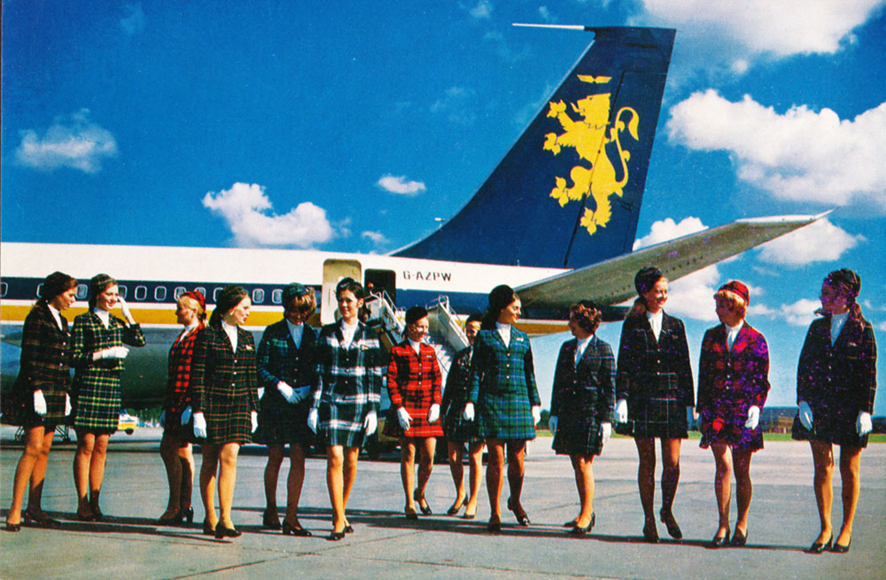
It was BCal who first introduced UK travellers to the ‘no frills’ service we regularly accept today. In 1972 they offered night time flights from Gatwick to Glasgow and Edinburgh for just £5 one way under the title ‘Moonjet’ flights. That same year charter rates plummeted and as these flights still made up over 50 per cent of the airline’s business, BCal made the first-ever loss for parent company Caledonian Airways Group.
In the early 1970s BCal purchased a number of more modern Boeing 707s and BAC 1-11s which allowed them to remove from service some of the early model 707s, BAC One-Eleven-200 and one VC10. These new Boeings were put to work on the Gatwick -New York and Gatwick- Los Angeles routes the company had just been licenced to operate from 1 April 1973, the first time a UK independent airline had operated scheduled flights to the USA. New scheduled routes continued to be added to the timetable but in 1974 the formation of British Airways and the aftermath of the 1973 Israeli/Arab war, which caused a massive increase in fuel costs, led to a drop off in air travel and a major change of plan just to survive. The transatlantic flights along with several other routes were dropped or suspended. The remaining VC10s were sold off and the inevitable staff cuts followed. It wasn’t all bad news as new routes to Dakar and Kinshasa in Africa were opened and the difficult steps that had been taken ensured that by the end of 1975 BCal was again making a profit.
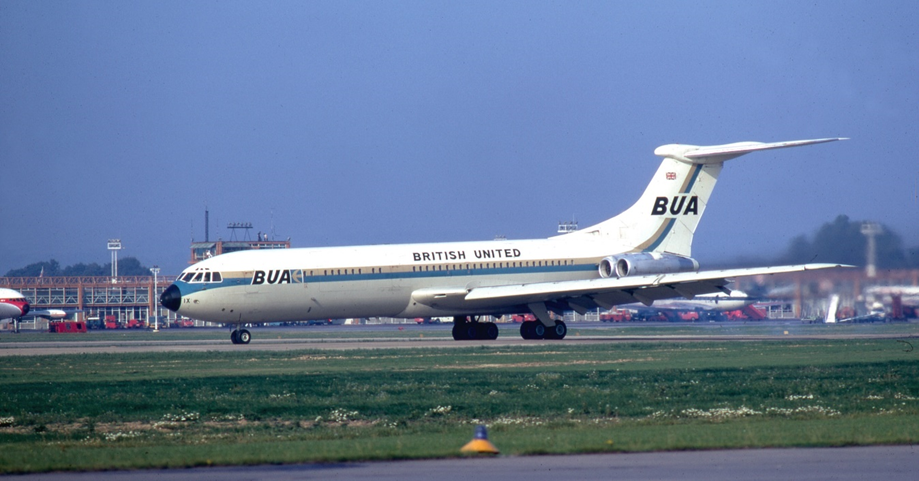
In 1976 the UK government again stepped in and decided healthy competition between BCal and British Airways wasn’t working. A reshuffle of routes took place to remove many of the jointly operated services. BCal lost its Transatlantic routes to New York, Los Angeles, Boston and Toronto and also its East Africa routes but gained others in West Africa and South America. As a result of new route agreements with the USA that same year, BCal gained rights to fly to Dallas, Houston and Atlanta. Additional cargo routes were also flown to these new cities using the Boeing 707 freighters. There was plan to replace the 707 passenger aircraft with widebody equipment and in 1976 BCal placed an order with Douglas for two of their new DC-10-30 long range widebody aeroplanes with options on two more. The first Douglas Tri-jet arrived the following year and was immediately put into service on the Nigeria and Ghana routes. So pleased were BCal with their new aeroplane that they converted their options into orders and two more arrived in 1979, with the final one of the order arriving somewhat later than planned due to a strike at the Douglas factory.
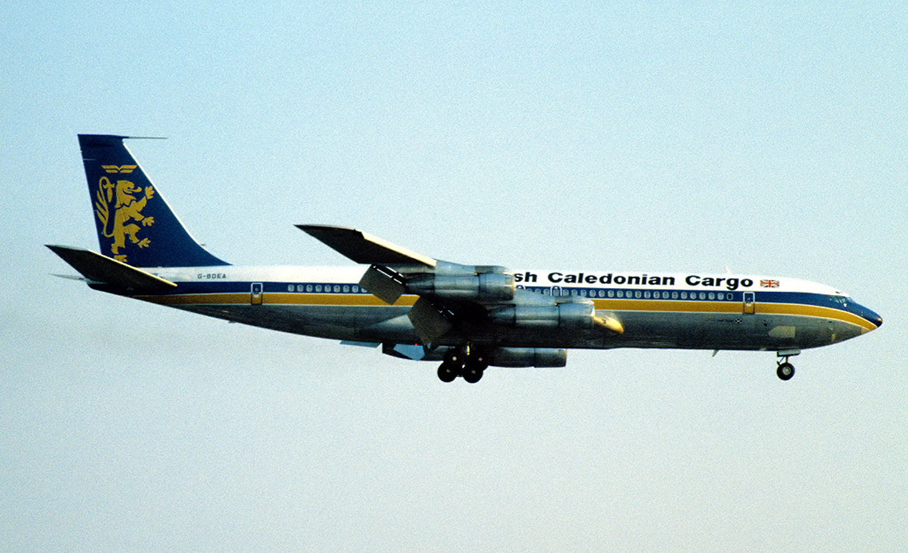
By 1978 BCal had bounced back from the dark days of 1974 and made the largest profit yet of £12.2m. The board decided that in recognition of all the hard work the staff had put in, they would start a profit sharing scheme for the employees, the first of its kind in the UK. It was also during this year that BCal finally withdrew from the charter market that had seen its share slowly drop to just 15 per cent of all BCal passengers. The final reasons for this were twofold. One the steady drop in European charter rates and two the effect the success of the Laker SkyTrain service was having on transatlantic charters. BCal now became an all-scheduled service airline, something its predecessors at Caledonian had always wanted to become. The airline was by now also serving most of its African and South American routes with DC-10 widebody aircraft.
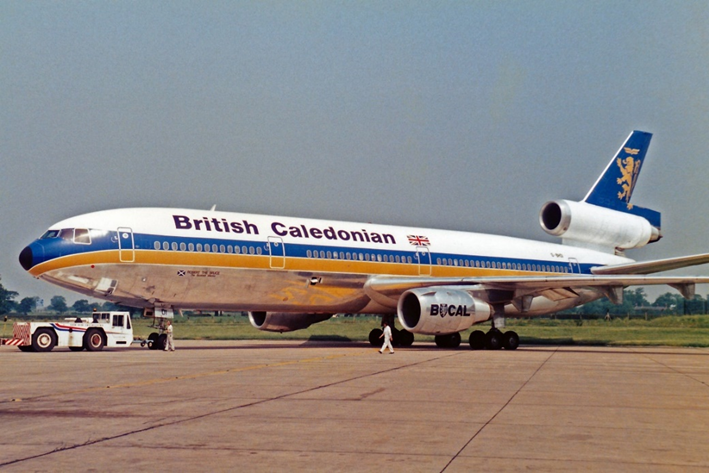
In the late 1970s BCal were actively looking at ways to run Concorde operations down to Nigeria and across to Atlanta. After putting in an unsuccessful bid for two unsold Concordes the plan never went any further after British Airways bought one of them. A single aircraft operation would not have been a viable proposition. With more long haul DC-10s arriving, the 707 fleet was free in 1979 to start several new services to South America such as Quito and Guayaquil in Equador. The short haul fleet also became busier with increased services on several existing routes. BCal also started the Heathrow-Gatwick helicopter shuttle which operated with BA and the BAA until the M25 was completed.
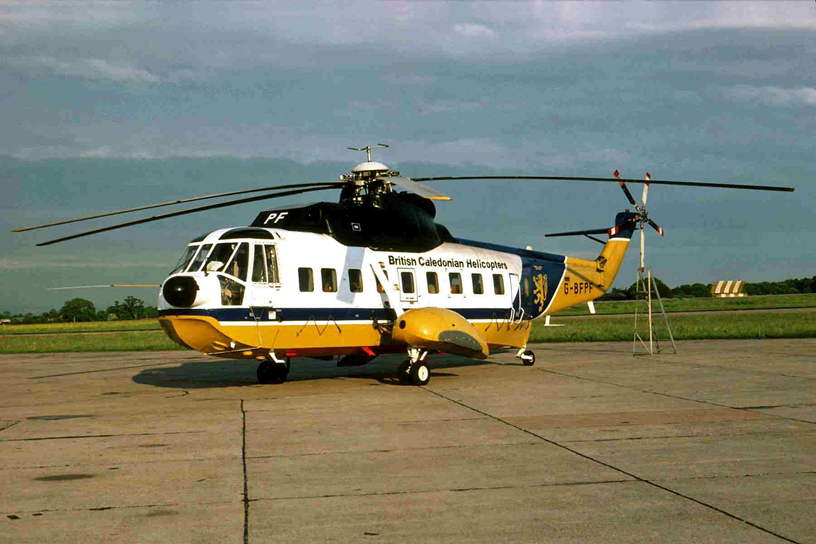
The airline began to look at new aircraft to add to or replace some of its fleet and in 1979 BCal placed an order with Airbus for three of their A310 wide-body aircraft. A major setback that year was the worldwide grounding of the DC-10 fleet following an American Airlines DC-10 crash in Chicago. The airline was forced to hire in a Boeing 747 to cover for the lack of seat availability mainly on its African routes. By the time of the airline’s tenth anniversary in 1980 it had taken delivery of yet more DC-10s and was now operating them on the new routes to Atlanta and Hong Kong. Puerto Rico, St Louis and Dallas were also added to the network later that year. With fuel prices continually rising the airline was forced to cut costs by cutting back on some of its short haul schedules and also to look for more fuel efficient jets to replace its now aging fleet of BAC 1-11s. There was also an effort to gain rights to fly to Australia but opposition from both British Airways and Qantas put a stop to these plans. By the end of the 1981 financial year BCal had suffered a loss of £6.2m due mainly to high oil prices and major recessions on both sides of the Atlantic. When Laker went bust in 1982, BCal acquired two of the failed company’s DC-10-10s and four BAC 1-11-300s. This bought the BCal DC-10 fleet up to ten aeroplanes. Using one of these ex-Laker machines the airline re-entered the charter market setting up a subsidary called British Caledonain Charter.
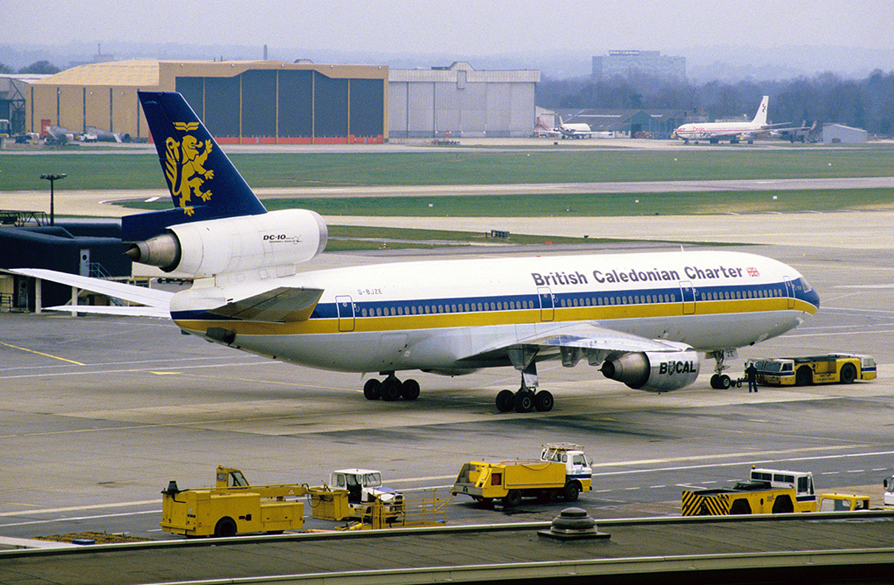
In an effort to update its short haul fleet, in 1983 BCal placed an order for ten of the new Airbus A320 aircraft for delivery in 1988, becoming the first non-French airline to order the new plane. As a launch customer for the new fly-by-wire aeroplane, Airbus had offered BCal generous terms. The company was also keen to get a sale to an independent airline in the bag as this would hopefully help sales elsewhere in the future. BCal actually ordered their aircraft before Air France but for political reasons both airlines were cited as the launch customers. When British Airways took over BCal they inherited the A320s, an aeroplane in which they had shown no interest, being a big Boeing customer. BA could not get out of the deal so operated the ten aeroplanes as a small fleet. So happy were they with the costs and public appeal, their Boeings were disposed of and today British Airways short haul division operates a total Airbus fleet.
In 1984 the government was starting to make arrangements to privatise British Airways, BCal realised this would mean the end to the ‘second force’ airline arrangement and it would be a case of dog eat dog especially when BA’s massive debts were written off by the government. The BCal management submitted to the government several plans of route swaps and cash payments to try and make it a more level playing field, saying if this wasn’t agreed it could well mean BCal being merged with BA. British Airways refused to play ball but were finally ordered to hand over their Saudi flights to BCal in return for BCal’s South American routes which had been making losses for some time following the Falklands War. 1984 saw the arrival of two Airbus A310 aircraft also in that year BCal announced a profit of £15.4m.
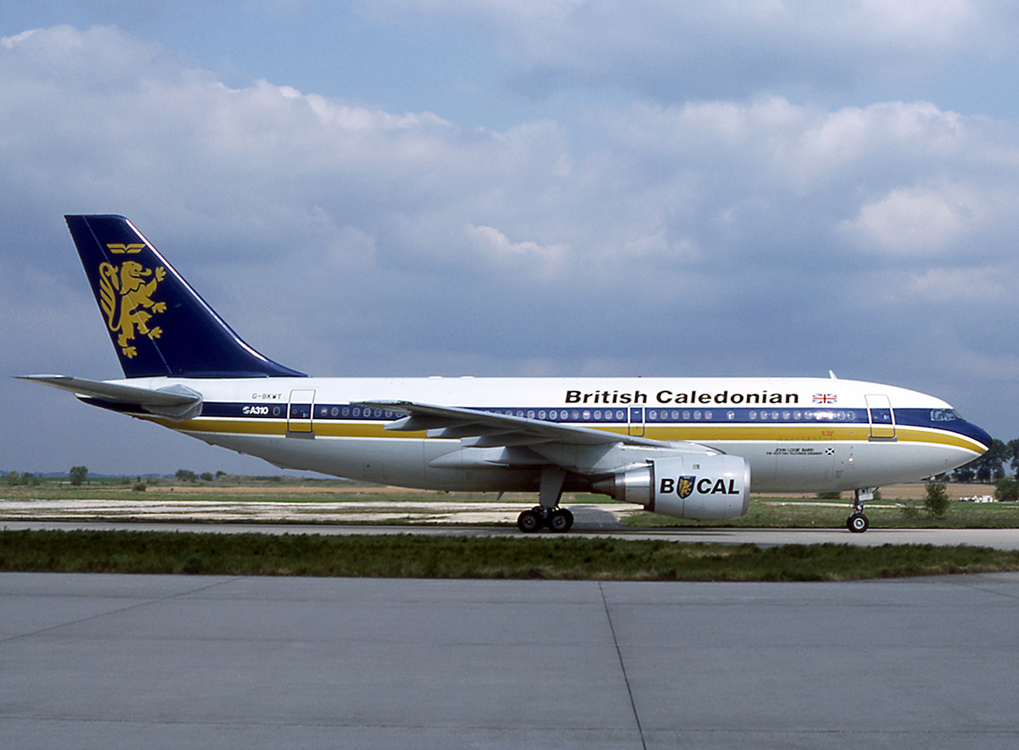
1984 saw several changes to the fleet, with the Laker BAC 1-11-300 aircraft being sold and replaced by one BAC 1-11-500 bringing the fleet up to 13 aeroplanes all now the same type. The last of the Boeing 707s also left the fleet. The following year the new routes to Saudi commenced along with the resumption of the Gatwick- New York service which saw a Boeing 747 enter the BCal fleet. The A310s had not fitted the revised route network and were sold, two more second-hand DC-10s were acquired to replace them. 1985 was a record year for profits with the airline announcing £21.4m end of year profit. It was however not a bed of roses as with the downturn in oil demand BCal was not making the planned for profits on its Saudi routes. This and other drops in revenue were going to affect future bottom line of the airline. Talks were started with Air Europe to explore ways of operating together to cut costs, however despite lengthy negotiations nothing further came of this project.
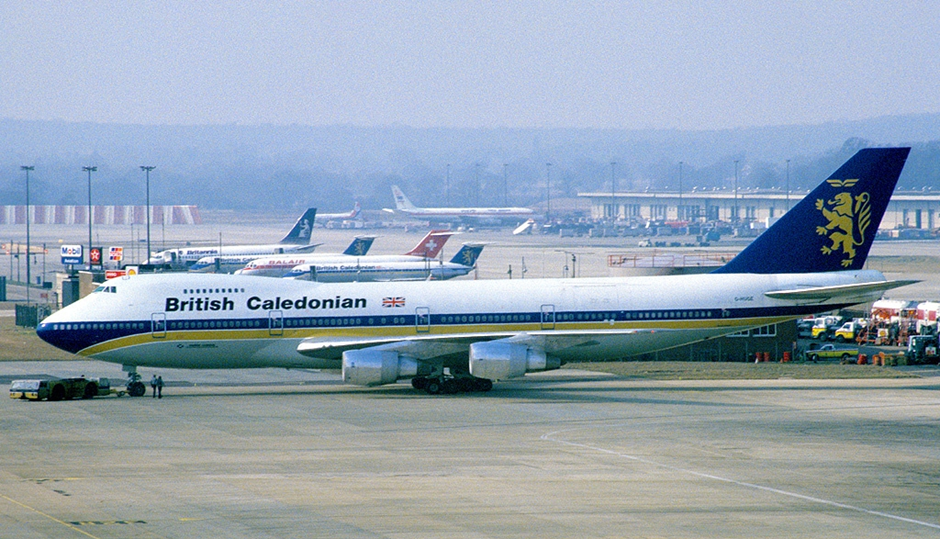
BCal entered 1985 with high hopes but it was not to be. The Americans bombed Libya, The Chernobyl reactor exploded and the Nigerian currency was devalued. All this, along with the continued drop in passengers due to the downturn of the oil price and the end of the Heathrow-Gatwick helicopter link, left BCal with some hard decisions to make. 1000 staff lost their jobs, many routes had their frequencies trimmed and much of the non-core business assets were sold off. Two low-hour DC-10s were sold to Continental Airlines and the entire BAC 1-11 fleet sold and leased back. Despite this, more capacity was needed and two more Boeing 747s joined the fleet and a couple of new routes were opened. By 1987 most of the money from the measures taken two years ago had gone and it was apparent the airline could no longer survive in its present state. The BCal management held talks with several other airlines about a possible merger but nothing came to fruition.
With its financial problems obvious to anyone looking at the company and with a large number of lucrative slots and routes BCal was a prime target for a takeover. Those eying up the ailing airline were British Airways, SAS, UTA and Air Europe. BCal had become the strong second force flag carrier the 1960 government had wanted but had always had to fight against a British Airways that was still being protected by the 1980’s Government to ensure BA’s privatisation was a success. After a lot of wrangling, arm twisting, and manoeuvring British Airways finally came out the winner and took over British Caledonian Airways in April 1988 paying just £252m. As part of the deal BA had to give up a number of slots and routes from Gatwick with Air UK, Dan Air and Air Europe taking on some of these.
British Airtours, the British Airways charter subsidiary at Gatwick, was rebranded as Caledonian Airways and their planes repainted with a new rendition of the Caledonian lion on the tail and the cabin crew losing their BA uniforms in favour of the Caledonian tartan styles. The BCal 1-11s went to the BA bases at Manchester and Birmingham their place at Gatwick being taken by a fleet of Boeing 737, the 747s were replaced by some of BA’s own. The DC-10 fleet remained at Gatwick but joined the British Airways operation. The Caledonian fleet was joined by a small number of Lockheed L1011 Tristars. The first of the brand new A320s arrived but they had already been painted in the BA scheme and soon departed to Heathrow, however the first one built was in BCal colours but it was retained for a while by the factory for trials and eventually arrived at Heathrow the operating base for the Airbus fleet in full BA colours.
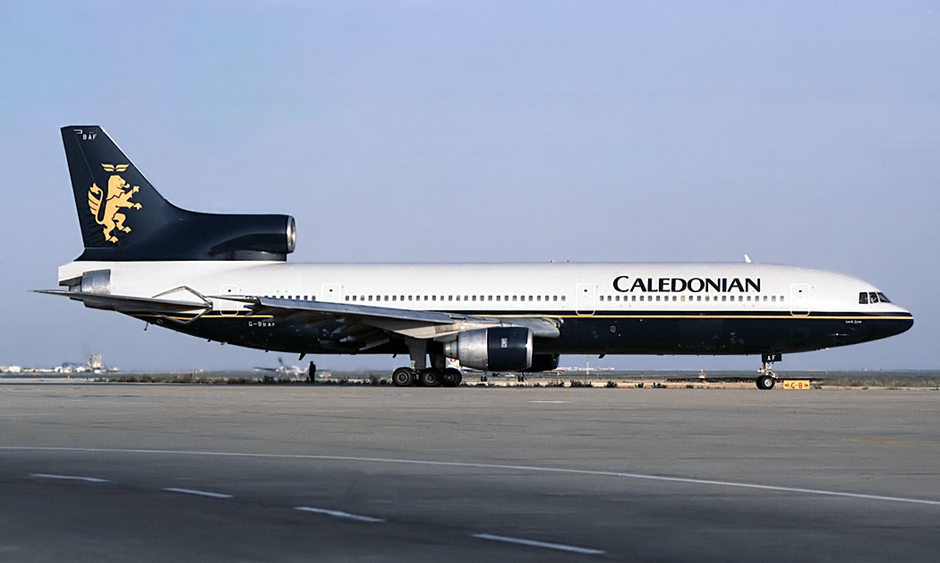
Shortly after the takeover Caledonian began to replace its Boeing 737s with the aforementioned Tristars and also brand-new Boeing 757s. The 737s went back to British Airways to fly the scheduled routes from Gatwick that they had retained from the BCal takeover. More Tristars joined the fleet along with three DC-10s. A number of Airbus A320s flew with the company, as did one Boeing 747. By 1995 the Tristars were rather long in the tooth and BA had decided to quit the IT charter scene to concentrate on its core scheduled services. Caledonian Airways was sold to UK tour operator Inspirations part of the Carlson group of companies, but some of the Boeing 757s were not part of the deal returning to the BA mainline fleet. In 2000 Caledonian was merged with Flying Colours to form JMC airlines and finally after 49 years aloft the Caledonian Lion flew no more.
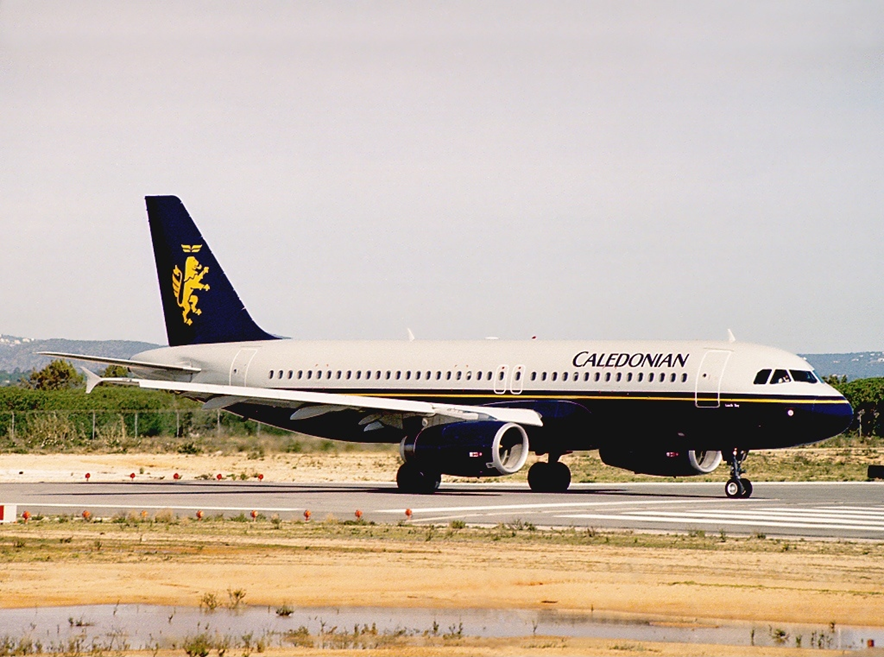
There we have it, a brief snapshot of two Caledonians with a British Caledonian in the middle! As can be seen from this article the two Caledonians were very different animals with the first striving to be a scheduled airline and the second happy just to offer IT charter flights. Whichever paint scheme was on the aeroplanes they were always fondly known as Callys .
For more in depth information and pictures on British Caledonian and its people, visit the tribute website www. british-caledonian.com to whom we are grateful for assistance in preparing this article.
‘till the next time Keith
Registered Charity No. 285809